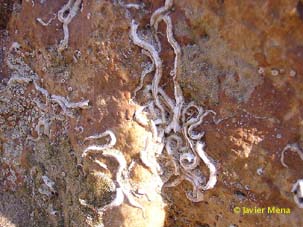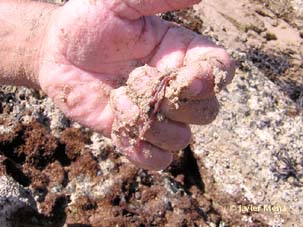Polychaetes (Class Polychaeta) constitute the most numerous group and the most structurally diverse of the annelids. About 10,000 living species.
These segmented worms are exclusively marine, and can be found living in the depths of the ocean, floating free near the surface, or burrowing in the mud and sand of the beach. Some, such as Eunice gigantea, may reach three meters long.
Polychaetes are known by many names: lugworms, clam worms, bristleworms, fire worms, palolo worms, sea mice, featherduster worms, etc., but all posses an array of bristles on their many leg-like parapodia. The name polychaete, in fact, means "many bristles".
Polychaeta: "A variety of marine worms"
plate from Das Meer by M. J. Schleiden (1804-1881) |
According to their way of life, Polychaetes are divided into errants and sedentaries
They include forms which are: active burrowers; sedentary burrowers; tube-dwelling in sediment; tube-dwelling on a hard substrate; errant, beneath stones etc. on rocky shores; and pelagic forms.
Errant polychaete

Tube-dwelling on a hard substrate
TO EXTEND IMAGE
Active burrowers polychaetes |




